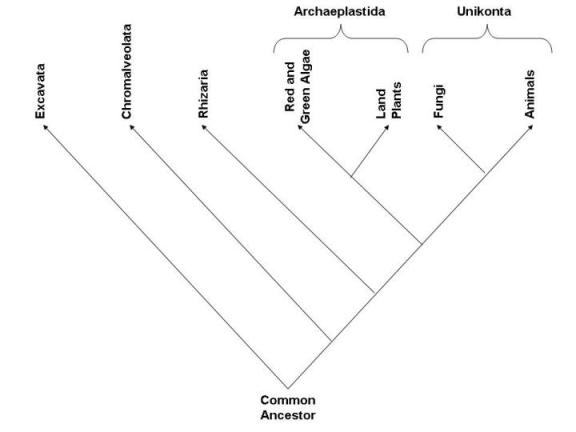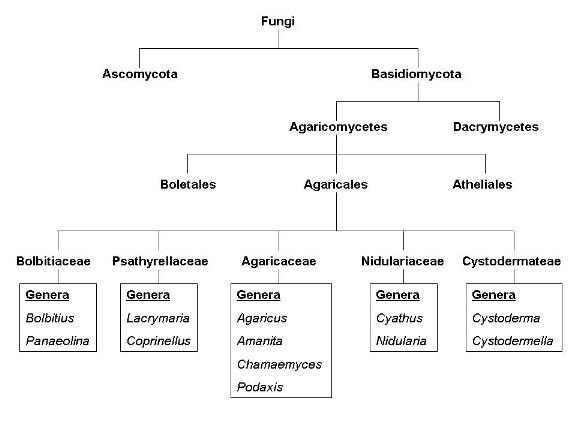
Classification
Taxonomy
Domain:
Eukarya
Kingdom: Fungi
Phylum: Basidiomycota
Class: Agaricomycetes
Order: Agaricales
Family: Amanitaceae
Genus: Amanita
Species:
Amanita muscaria
What characteristics make Amanita muscaria
part of each of these taxonomical classifications?
Eukarya: possesses a cell membrane,
membrane-bound organelles, and a nucleus containing
the organism's genetic information
Fungi: possesses a fruiting body, cell
walls are made of chitin, heterotrophic, alternation
of generations
Basidiomycota: sexual spores, known as
basidia, are produced externally on a club-shaped
structure called a basidium, usually no asexual spores, dominant
dikaryon
phase, posses a fruiting body, filamentous
Agaricomycetes: produce basidiocarp, form
gilled-mushrooms, filamentous
Agaricales: no traits, whether molecular,
ecological, or biochemical, link the members of
this class
Amanitaceae: white spores, white to pale
colored gills, a universal veil that envelopes the
young mushroom
Amanita: pale gills, universal
veil, white spores, warts on cap
Amanita muscaria: white patches on cap, cap
color typically red but ranges from red to
white, convex to flattened cap, faintly grooved margin
Phylogeny

-
The phylogenic tree above is quite broad, but shows a very important point. Thanks to modern molecular techniques, it has been determined that fungi are more closely related to animals (both within the Unikonta supergroup) than to land plants. The fact that fungi are heterotrophic and store sugar as glycogen (like animals) and have cell walls made of chitin (unlike cellulose in land plants) further supports this discovery.

-
The phylogenic tree directly above was based on molecular data and information was provided by and interpreted from the Tree of Life web project.
Now that you know how A. muscaria is classified, let us take a look at Variation Within the Species.